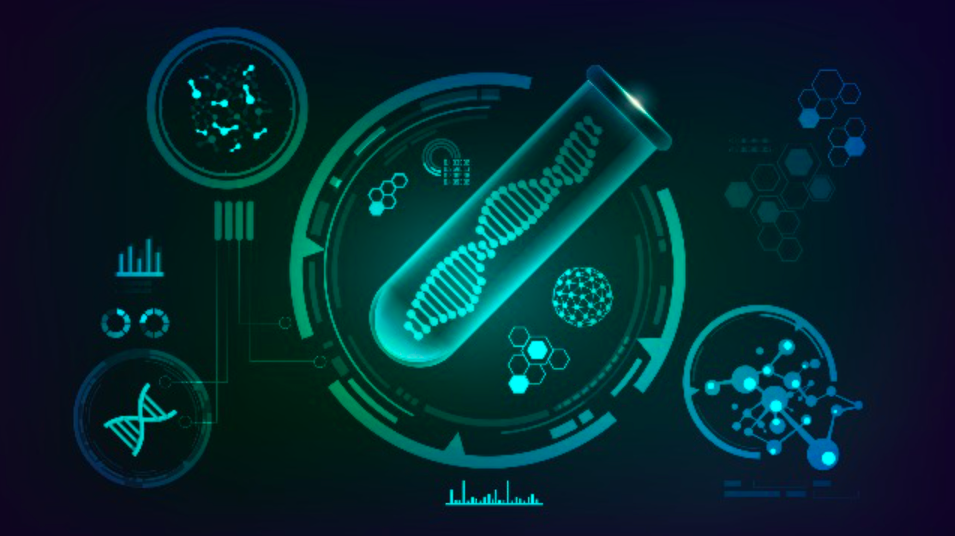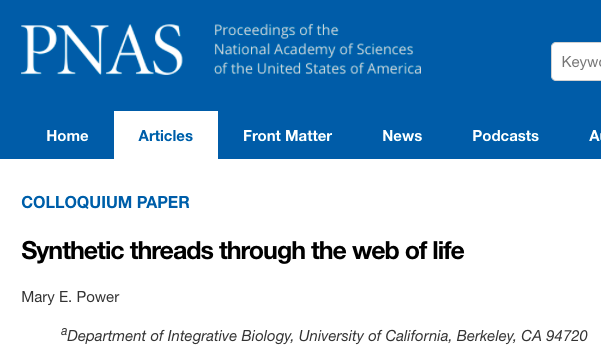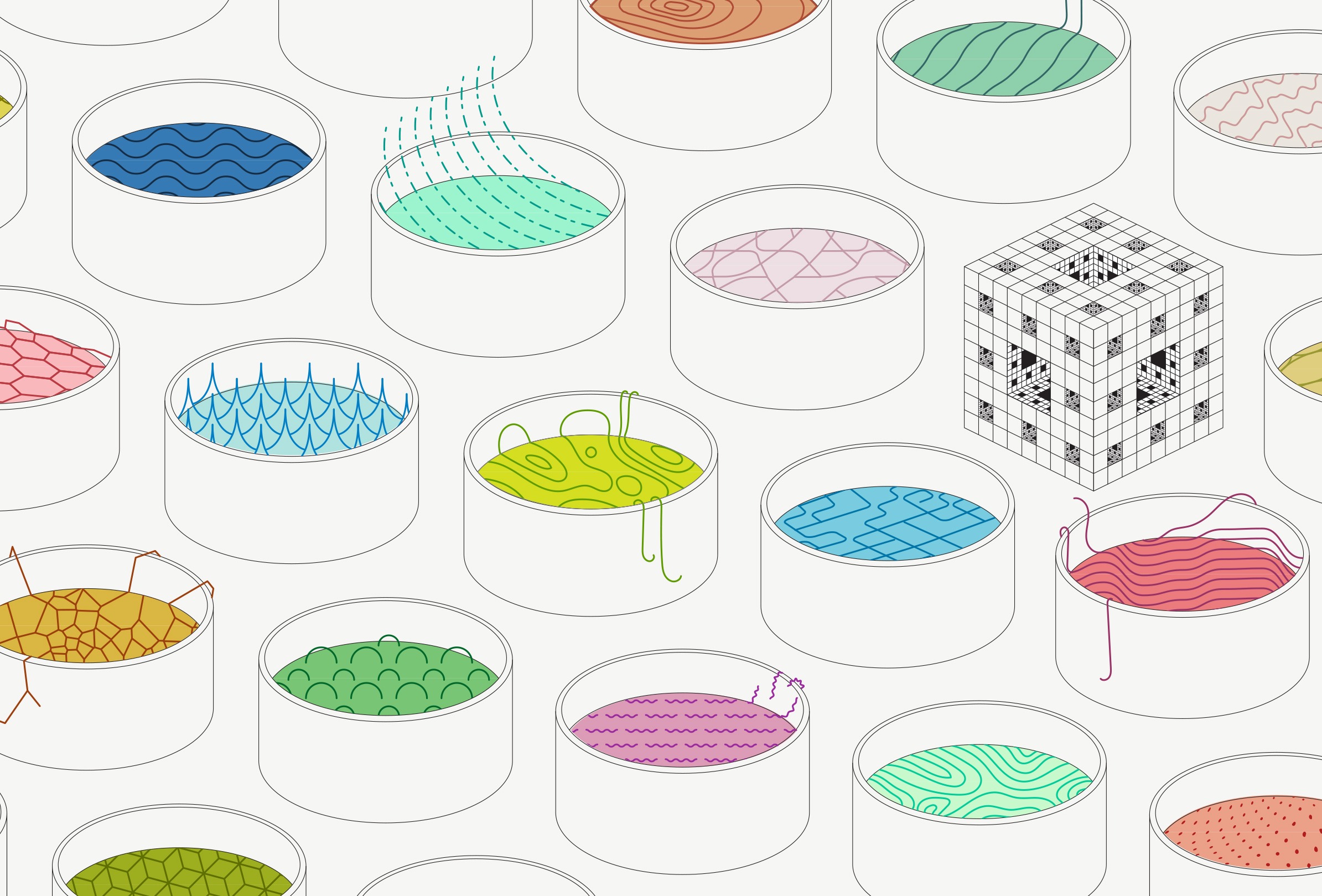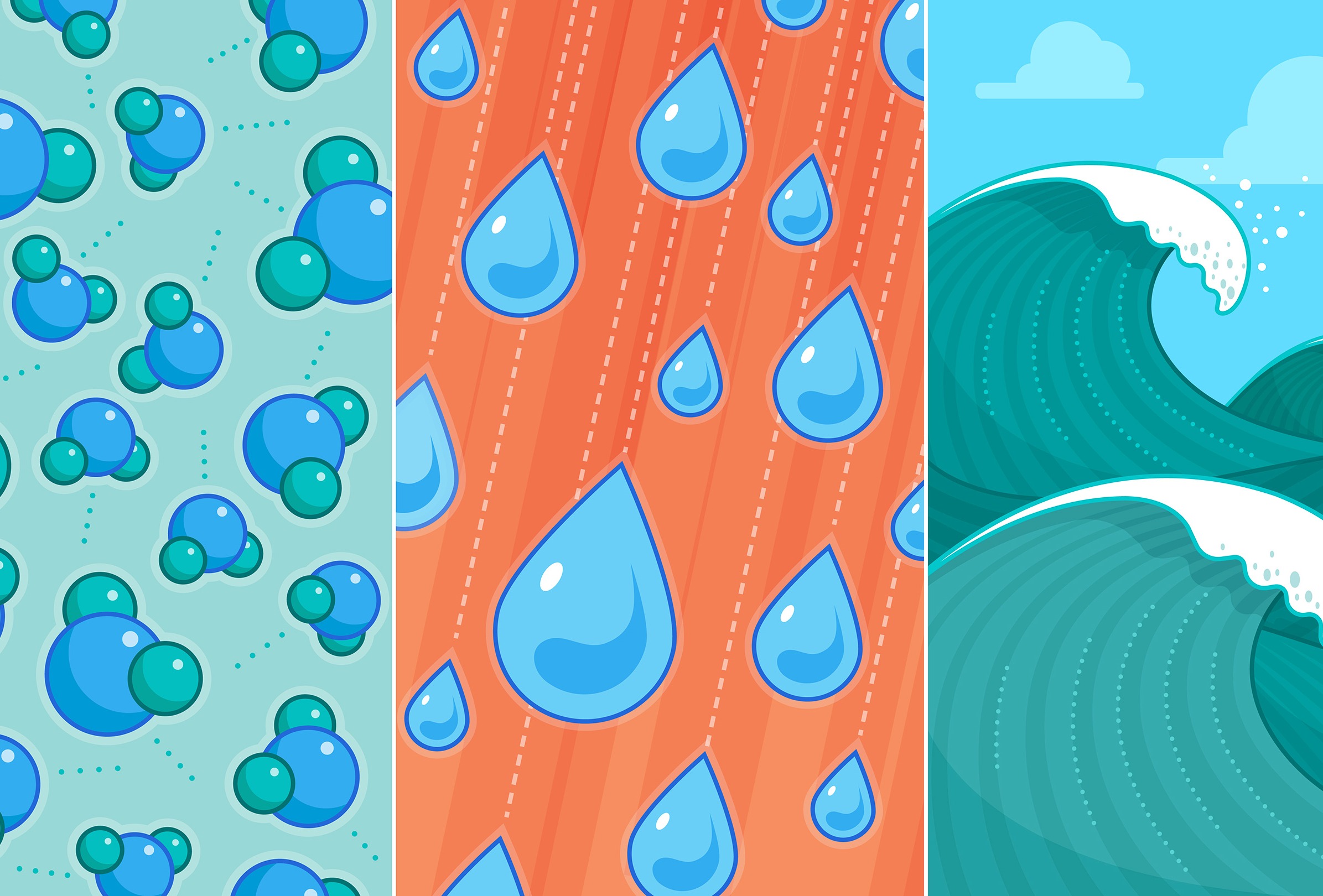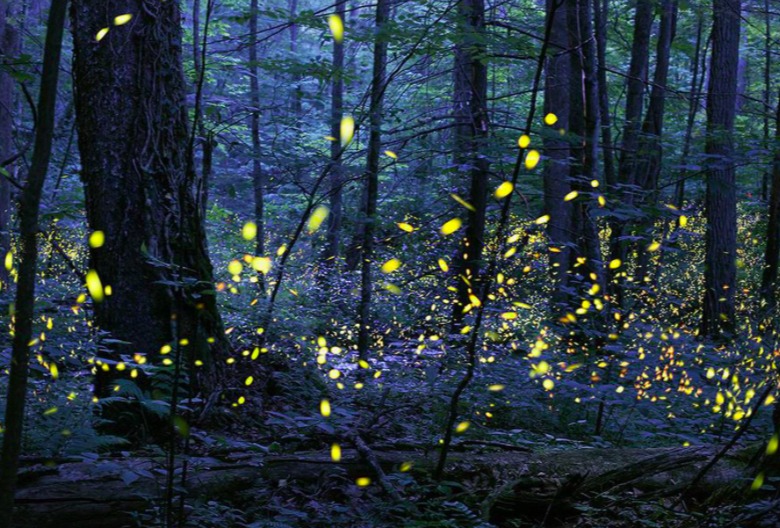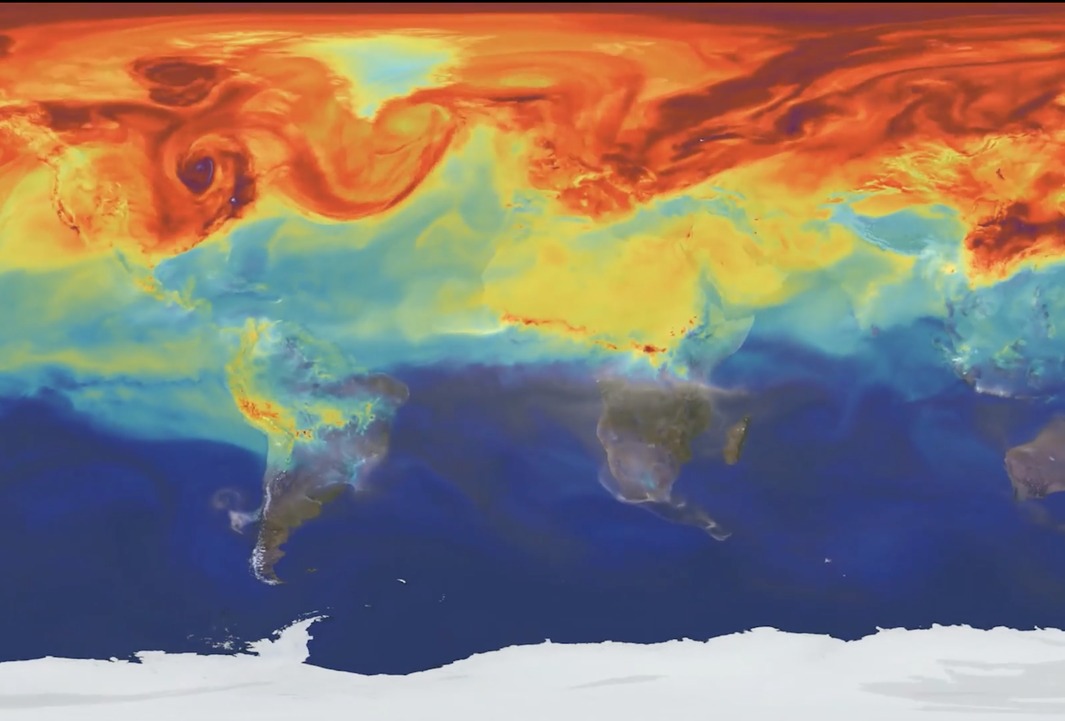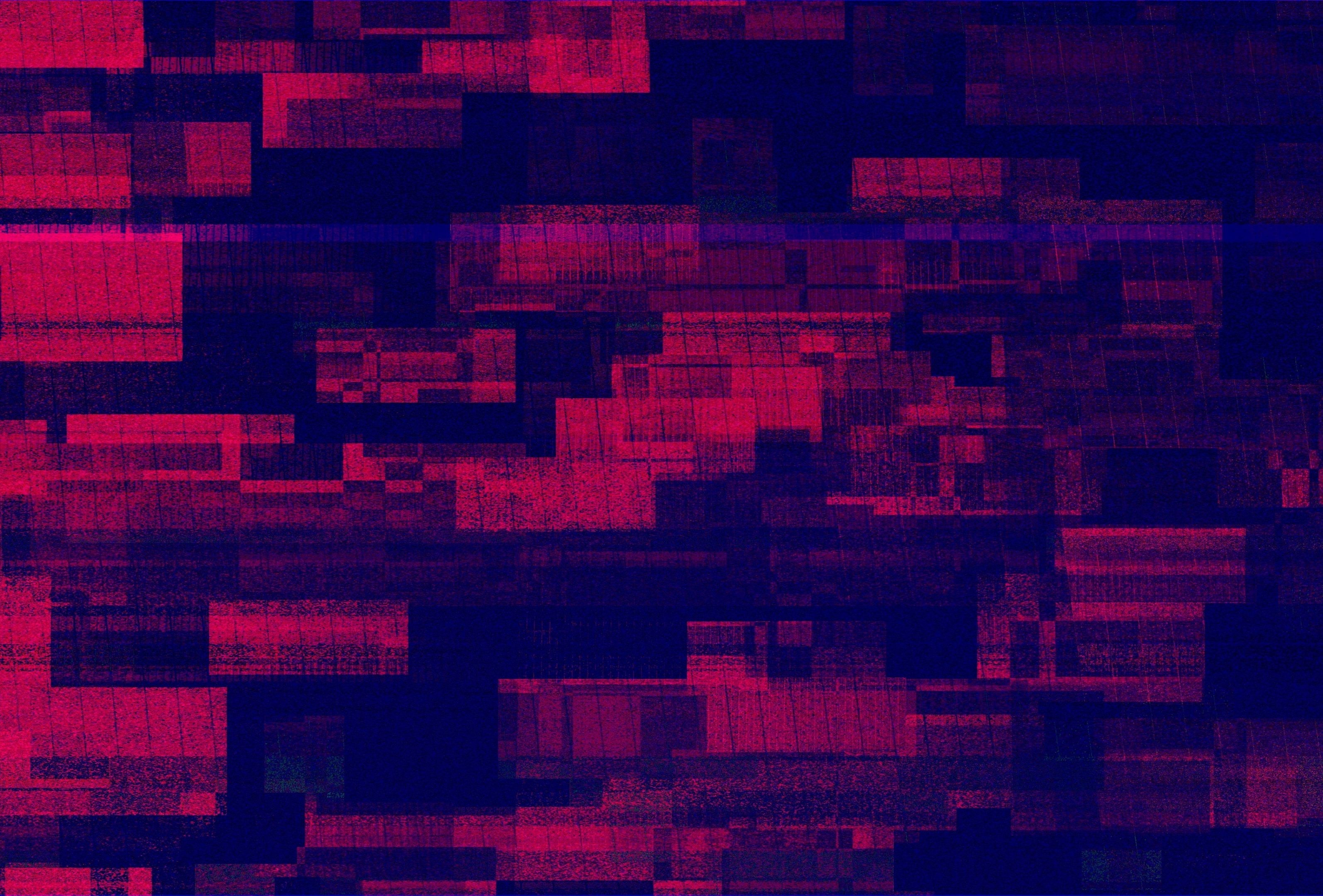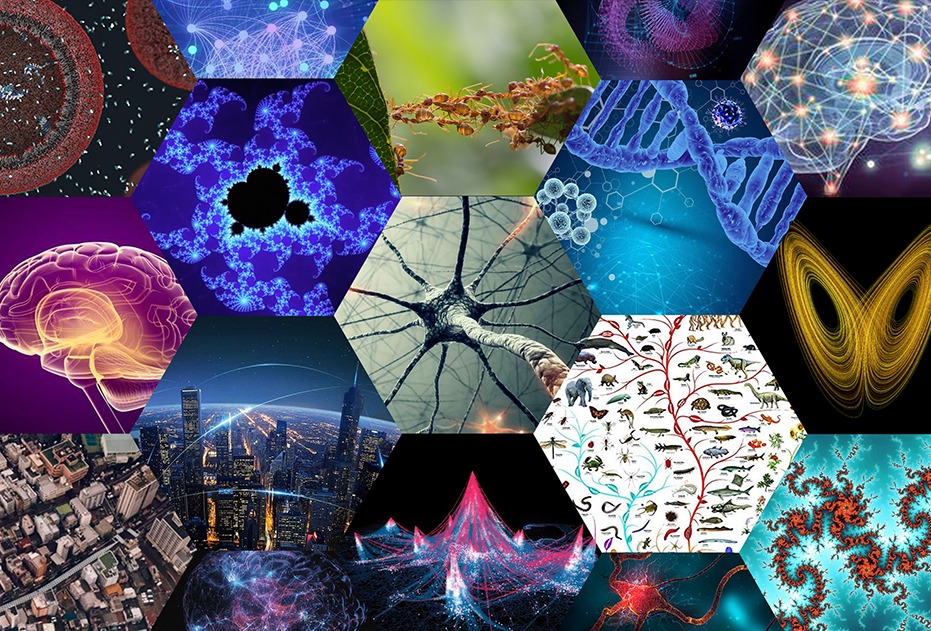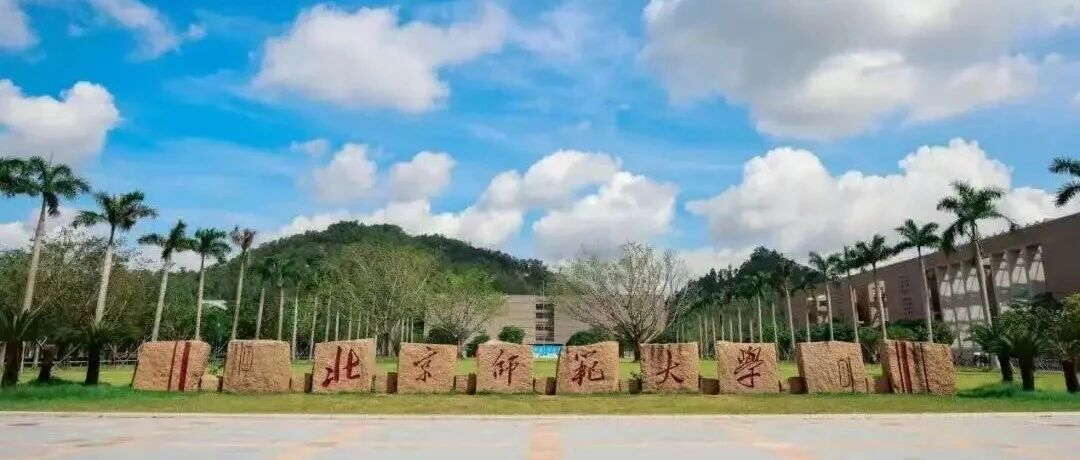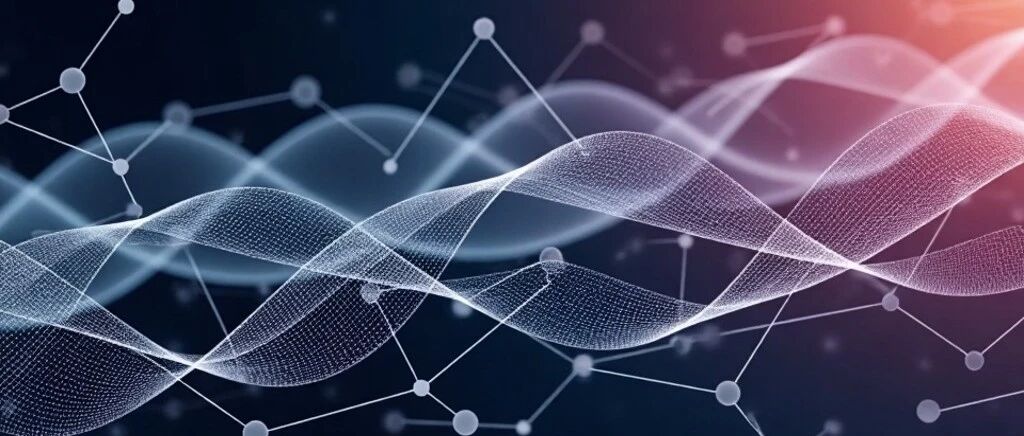1. J. A. Doudna, S. H. Sternberg, A Crack in Creation (Houghton Mifflin Harcourt, 2017).
2. G. Church, E. Regis, Regenesis (Basic Books, 2012).
3. National Academies of Sciences, Engineering, and Medicine, Gene Drives on the Horizon: Advancing Science, Navigating Uncertainty, and Aligning Research with Public Values (The National Academies Press, 2016).
4. G. E. Kaebnick et al., Precaution and governance of emerging technologies. Science 354, 710–711 (2016).
5. E. Heitman, K. Sawyer, J. P. Collins, Gene drives on the horizon: Issues for biosafety. Applied Biosafety International 21, 173–176 (2016).
6. K. A. Oye et al., Biotechnology. Regulating gene drives. Science 345, 626–628 (2014).
7. J. Kahn, The gene drive dilemma: We can alter entire species, but should we? New York Times Magazine, 8 January 2020. https://www.nytimes.com/2020/01/08/magazine/gene-drive-mosquitoes.html. Accessed 19 January 2020.
8. A. G. Tansley, The use and abuse of vegetational concepts and terms. Ecology 16, 284–307 (1935).
9. P. M. Vitousek, L. R. Walker, L. D. Whiteaker, D. Mueller-Dombois, P. A. Matson, Biological invasion by Myrica faya alters ecosystem development in Hawaii. Science 238, 802–804 (1987).
10. M. Scheffer, S. Carpenter, J. A. Foley, C. Folke, B. Walker, Catastrophic shifts in ecosystems. Nature 413, 591–596 (2001). 1
1. M. E. Power et al., The role of experiments in ecology. Science 270, 561 (1995). 12. Salk Institute for Biological Studies, Joseph Ecker. https://www.salk.edu/scientist/josephecker/. Accessed 31 March 2020.
13. D.-S. Lee et al., Simultaneous profiling of 3D genome structure and DNA methylation in single human cells. Nat. Methods 16, 999–1006 (2019).
14. E. Charney, Behavior genetics and postgenomics. Behav. Brain Sci. 35, 331–358 (2012).
15. C. K. Deutsch, W. J. McIlvane, Non-mendelian etiologic factors in neuropsychiatric illness: Pleiotropy, epigenetics, and convergence. Behav. Brain Sci. 35, 363–364 (2012).
16. T. Kawakatsu, J. R. Ecker, Diversity and dynamics of DNA methylation: Epigenomic resources and tools for crop breeding. Breed. Sci. 69, 191–204 (2019).
17. C. L. Richards et al., Ecological plant epigenetics: Evidence from model and nonmodel species, and the way forward. Ecol. Lett. 20, 1576–1590 (2017).
18. O. Bossdorf, C. L. Richards, M. Pigliucci, Epigenetics for ecologists. Ecol. Lett. 11, 106–115 (2008).
19. Wikipedia, E. coli long-term evolution experiment. https://en.wikipedia.org/wiki/E._ coli_long-term_evolution_experiment. Accessed 20 January 2020.
20. R. J. Woods et al., Second-order selection for evolvability in a large Escherichia coli population. Science 331, 1433–1436 (2011).
21. D. J. Starr, T. W. Cline, A host parasite interaction rescues Drosophila oogenesis defects. Nature 418, 76–79 (2002).
22. K. M. Oliver, P. H. Degnan, M. S. Hunter, N. A. Moran, Bacteriophages encode factors required for protection in a symbiotic mutualism. Science 325, 992–994 (2009).
23. K. M. Oliver, P. H. Degnan, G. R. Burke, N. A. Moran, Facultative symbionts in aphids and the horizontal transfer of ecologically important traits. Annu. Rev. Entomol. 55, 247–266 (2010).
24. K. I. Verster et al., Horizontal transfer of bacterial cytolethal distending toxin B genes to insects. Mol. Biol. Evol. 36, 2105–2110 (2019).
25. J. Losos, Improbable Destinies: Fate, Chance, and The Future of Evolution (Riverhead Books, Random House, 2017).
26. A. Burt, Site-specific selfish genes as tools for the control and genetic engineering of natural populations. Proc. Biol. Sci. 270, 921–928 (2003).
27. L. Alphey, Genetic control of mosquitoes. Annu. Rev. Entomol. 59, 205–224 (2014).
28. J. E. Crawford et al., Efficient production of male Wolbachia-infected Aedes aegypti mosquitoes enables large-scale suppression of wild populations. Nat. Biotechnol. 38, 1–15 (2020).
29. K. M. Esvelt, A. L. Smidler, F. Catteruccia, G. M. Church, Concerning RNA-guided gene drives for the alteration of wild populations. eLife 3, 20131071 (2014).
30. K. Kyrou et al., A CRISPR-Cas9 gene drive targeting doublesex causes complete population suppression in caged Anopheles gambiae mosquitoes. Nat. Biotechnol. 36, 1062–1066 (2018).
31. J. Champer et al., Reducing resistance allele formation in CRISPR gene drive. Proc. Natl. Acad. Sci. U.S.A. 115, 5522–5527 (2018).
32. J. Champer, A. Buchman, O. S. Akbari, Cheating evolution: Engineering gene drives to manipulate the fate of wild populations. Nat. Rev. Genet. 17, 146–159 (2016).
33. V. M. Gantz et al., Highly efficient Cas9-mediated gene drive for population modification of the malaria vector mosquito Anopheles stephensi. Proc. Natl. Acad. Sci. U.S.A. 112, E6736–E6743 (2015).
34. J. E. DiCarlo, A. Chavez, S. L. Dietz, K. M. Esvelt, G. M. Church, Safeguarding CRISPRCas9 gene drives in yeast. Nat. Biotechnol. 33, 1250–1255 (2015).
35. M. S. Alam et al., Prevalence of anopheline species and their Plasmodium infection status in epidemic-prone border areas of Bangladesh. Malar. J. 9, 15 (2010). 3
6. H. Andrewartha, L. Birch, The Distribution and Abundance of Animals (University of Chicago Press, 1954).
37. G. E. Hutchinson, Concluding remarks. Cold Spring Harb. Symp. Quant. Biol. 22, 415–427 (1957).
38. J. Harte, Maximum Entropy and Ecology: A Theory of Abundance, Distribution, and Energetics (Oxford University Press, 2011).
39. S. J. Phillips, R. P. Anderson, R. E. Schapire, Maximum entropy modeling of species geographic distributions. Ecol. Modell. 190, 231–259 (2006).
40. S. J. Phillips, M. Dudik, Modeling of species distributions with MaxEnt: New extensions and a comprehensive evaluation. Ecography 31, 161–175 (2008).
41. J. B. S. Haldane, A defense of beanbag genetics. Perspect. Biol. Med. 7, 343–359 (1964).
42. N. G. Hairston, F. E. Smith, L. B. Slobodkin, Community structure, population control, and competition. Am. Nat. 94, 421–425 (1960).
43. R. T. Paine, A note on trophic complexity and community stability. Am. Nat. 103, 91–93 (1969).
44. R. T. Paine, Food webs: Linkage, interaction strength and community infrastructure. J. Anim. Ecol. 49, 666–685 (1980).
45. R. T. Paine, Food-web analysis through field measurement of per capita interaction strength. Nature 355, 73–75 (1992).
46. M. E. Power et al., Challenges in the quest for keystones. Bioscience 46, 609–620 (1996).
47. B. A. Menge, E. Berlow, C. Blanchette, S. Navarrete, S. Yamada, The keystone species concept: Variation in interaction strength in a rocky intertidal habitat. Ecol. Monogr. 64, 249–286 (1994).
48. M. E. Power, M. S. Parker, W. E. Dietrich, Seasonal reassembly of a river food web: Floods, droughts, and impacts of fish. Ecol. Monogr. 78, 263–282 (2008).
49. J. A. Estes, J. F. Palmisano, Sea otters: Their role in structuring nearshore communities. Science 185, 1058–1060 (1974).
50. J. A. Estes, M. T. Tinker, T. M. Williams, D. F. Doak, Killer whale predation on sea otters linking oceanic and nearshore ecosystems. Science 282, 473–476 (1998).
51. A. M. Springer et al., Sequential megafaunal collapse in the North Pacific Ocean: An ongoing legacy of industrial whaling? Proc. Natl. Acad. Sci. U.S.A. 100, 12223–12228 (2003).
52. S. B. Carroll, The Serengeti Rules (Princeton University Press, 2016).
53. M. E. Power, Top-down and bottom-up forces in food webs: Do plants have primacy? Ecology 73, 737–746 (1992).
54. T. W. Schoener, Field experiments on interspecific competition. Am. Nat. 122, 240–285 (1983).
55. D. R. Strong, “Density-vague ecology and liberal population regulation in insects” in A New Ecology, P. W. Price, C. N. Slobodchikoff, W. S. Gaud, Eds. (Wiley, 1984), pp. 313–327.
56. P. G. Falkowski, Life’s Engines (Princeton University Press, 2016).
57. H. R. DeYoe, R. L. Lowe, J. C. Marks, Effects of nitrogen and phosphorus on the endosymbiont load of Rhopalodia gibba and Epithemia turgida (Bacillariophyceae). J. Phycol. 28, 773–777 (1980).
58. S. Burén, L. M. Rubio, State of the art in eukaryotic nitrogenase engineering. FEMS Microbiol. Lett. 365, 1–9 (2018).
59. M. Charpentier, G. Oldroyd, How close are we to nitrogen-fixing cereals? Curr. Opin. Plant Biol. 13, 556–564 (2010).
60. K. V. Pixley et al., Genome editing, gene drives, and synthetic biology: Will they contribute to disease-resistant crops, and who will benefit? Annu. Rev. Phytopathol. 57, 165–188 (2019).
61. W. Mattson, Herbivory in relation to plant nitrogen content. Annu. Rev. Ecol. Syst. 11, 119–161 (1980).
62. J. A. Maron, R. L. Jefferies, Restoring enriched grasslands: Effects of mowing on species richness, productivity, and nitrogen retention. Ecol. Appl. 11, 1088–1100 (2001).
63. K. B. Suttle, M. A. Thomsen, M. E. Power, Species interactions reverse grassland responses to changing climate. Science 315, 640–642 (2007).
64. M. Puleo, Wildfires dot the Southwest as dry, windy conditions prove disastrous. AccuWeather, 15 June 2020. https://www.accuweather.com/en/severe-weather/wildfiresdot-the-southwest-as-dry-and-windy-conditions-prove-disastrous/759478. Accessed 1 July 2020.
65. Y. Vadeboncoeur, M. E. Power, Attached algae as the cryptic base of inverted trophic pyramids in freshwaters. Annu. Rev. Ecol. Evol. Syst. 48, 255–279 (2017).
66. M. T. Brett, D. C. Muller-Navarra, The role of highly unsaturated fatty acids in aquatic foodweb processes. Freshw. Biol. 38, 483–499 (1997).
67. J. Prechtl, C. Kneip, P. Lockhart, K. Wenderoth, U. G. Maier, Intracellular spheroid bodies of Rhopalodia gibba have nitrogen-fixing apparatus of cyanobacterial origin. Mol. Biol. Evol. 21, 1477–1481 (2004).
68. T. Nakayama et al., Complete genome of a nonphotosynthetic cyanobacterium in a diatom reveals recent adaptations to an intracellular lifestyle. Proc. Natl. Acad. Sci. U.S.A. 111, 11407–11412 (2014).
69. C. Kneip, C. Voss, P. J. Lockhart, U. G. Maier, The cyanobacterial endosymbiont of the unicellular algae Rhopalodia gibba shows reductive genome evolution. BMC Evol. Biol. 8, 30 (2008).
70. M. E. Power et al., Algal mats and insect emergence in rivers under Mediterranean climates: Towards photogrammetric surveillance. Freshw. Biol. 54, 2101–2115 (2008).
71. S. J. Kupferberg, J. C. Marks, M. E. Power, Effects of variation in natural algal and detrital diets on larval anuran (Hyla regilla) life-history traits. Copeia 1994, 446–457 (1994).
72. C. Ng, “The transport of chemicals and biota into coastal rivers and marine ecosystems,” PhD dissertation, University of California, Berkeley, CA (2012).
73. M. E. Power, K. Bouma-Gregson, P. Higgins, S. M. Carlson, The thirsty Eel: Summer and winter flow thresholds that tilt the Eel River of Northwestern California from salmon-supporting to cyanobacterially degraded states. Copeia 2015, 200–211 (2015).
74. J. B. Sculley, R. L. Lowe, C. A. Nittrouer, T. M. Drexler, M. E. Power, Eighty years of food-web response to interannual variation in discharge recorded in river diatom frustules from an ocean sediment core. Proc. Natl. Acad. Sci. U.S.A. 114, 10155–10159 (2017).
75. K. Bouma-Gregson, R. M. Kudela, M. E. Power, Widespread anatoxin-a detection in benthic cyanobacterial mats throughout a river network. PLoS One 13, e0197669 (2018).
76. J. K. Carah et al., High time for conservation: Adding the environment to the debate on marijuana liberalization. Bioscience 65, 822–829 (2015).
77. K. Bouma-Gregson, M. E. Power, M. Bormans, Rise and fall of toxic benthic freshwater cyanobacteria (Anabaena spp.) in the Eel River: Buoyancy and dispersal. Harmful Algae 66, 79–87 (2017).
78. J. Sahu, S. P. Adhikary, Heterotrophic growth and nitrogen fixation in the filamentous blue-green alga Anabaena sp. Z. Allg. Mikrobiol. 21, 669–676 (1981).
79. M. A. Miller et al., Evidence for a novel marine harmful algal bloom: Cyanotoxin (microcystin) transfer from land to sea otters. PLoS One 5, e12576 (2010).
80. C. Mann, The Wizard and the Prophet (Vintage, 2019).
81. A. Anthony, Interview: Charles Mann: “The relationship between population and consumption is not straightforward.” The Guardian, 10 June 2018. https://www. theguardian.com/environment/2018/jun/10/charles-mann-book-wizard-prophet-interview. Accessed 19 February 2020.
82. S. M. Wisely, O. A. Ryder, R. M. Santymire, J. F. Engelhardt, B. J. Novak, A road map for 21st century genetic restoration: Gene pool enrichment of the black-footed ferret. J. Hered. 106, 581–592 (2015).
83. M. J. H. van Oppen, J. K. Oliver, H. M. Putnam, R. D. Gates, Building coral reef resilience through assisted evolution. Proc. Natl. Acad. Sci. U.S.A. 112, 2307–2313 (2015).
84. B. L. Webber, S. Raghu, O. R. Edwards, Opinion: Is CRISPR-based gene drive a biocontrol silver bullet or global conservation threat? Proc. Natl. Acad. Sci. U.S.A. 112, 10565–10567 (2015).
85. R. Sandler, The ethics of genetic engineering and gene drives in conservation. Conserv. Biol. 34, 378–385 (2020).
86. National Academies of Sciences, Engineering, and Medicine, Forest Health and Biotechnology: Possibilities and Considerations (The National Academies Press, 2019).
87. W. A. Powell, A. E. Newhouse, V. Coffey, Developing blight tolerant American chestnut trees. Cold Spring Harb. Perspect. Biol. 11, a034587 (2019).
88. G. Popkin, Can genetic engineering bring back the American chestnut? New York Times Magazine, 30 April 2020. https://www.nytimes.com/2020/04/30/magazine/ american-chestnut.html. Accessed 10 May 2020.
89. S. A. Zimov, N. S. Zimov, A. N. Tikhonov, F. S. Chapin, III, Mammoth steppe: A highproductivity phenomenon. Quat. Sci. Rev. 57, 26–45 (2012).
90. R. Anderson, Welcome to Pleistocene Park. The Atlantic, April 2017, pp. 1–34.
91. J. Rockström et al., A safe operating space for humanity. Nature 461, 472–475 (2009).
92. P. Bacigalupi, Wind Up Girl (Nightshade Books, San Francisco, CA, 2009).
93. M. K. Anderson, Tending the Wild (University of Californa Press, Berkeley, CA, 2006).
94. K. Lightfoot, O. Parrish, California Indians and Their Environment (University of Californa Press, Berkeley, CA, 2009).
95. N. Gilles, Wildfires are essential: The forest service embraces a tribal tradition (2017). https://www.yesmagazine.org/issue/science/2017/04/03/wildfires-are-essential-the-forestservice-embraces-a-tribal-tradition/. Accessed 15 June 2020.
96. R. T. Paine, Serengeti Rules (Passion Pictures). https://www.youtube.com/watch? v=rB72Hy5AGuA. Accessed 15 June 2020.
97. B. LaTour, Love your monsters: Why we must care for our technologies as we do our children. The Breakthrough Journal, 14 February 2012. https://thebreakthrough.org/ journal/issue-2/love-your-monsters. Accessed 15 June 2020.
98. B. A. Hungate et al., Quantitative microbial ecology through stable isotope probing. Appl. Environ. Microbiol. 81, 7570–7581 (2015).
99. D. Kotliar et al., Identifying gene expression programs of cell-type identity and cellular activity with single-cell RNA-seq. eLife 8, 507 (2019).
100. J. Eberwine, J. Y. Sul, T. Bartfai, J. Kim, The promise of single-cell sequencing. Nat. Methods 11, 25–27 (2014). 1
01. B. Koch et al., Estimating taxon-specific population dynamics in diverse microbial communities. Ecosphere 9, e02090–e15 (2018).
102. J. A. Estes et al., Trophic downgrading of planet Earth. Science 333, 301–306 (2011).
103. B. J. Meyer, Sex and death: From cell fate specification to dynamic control of X-chromosome structure and gene expression. Mol. Biol. Cell 29, 2616–2621 (2018).
104. M. G. Turner, Landscape ecology: The effect of pattern on process. Annu. Rev. Ecol. Syst. 20, 171–197 (1989).
105. J. Dekker, E. Heard, Structural and functional diversity of topologically associating domains. FEBS Lett. 589, 2877–2884 (2015).
106. National Academies of Sciences, Engineering, and Medicine, A Vision for NSF Earth Sciences 2020–2030: Earth in Time (The National Academies Press, 2020).
107. J.S. Chen et al., CRISPR-Cas12a target binding unleashes indiscriminate singlestranded DNase activity. Science 360, 436–439 (2018).
108. J. S. Gootenberg et al., Nucleic acid detection with CRISPR-Cas13a/C2c2. Science 356, 438–442 (2017).
109. M. Phelps, Increasing eDNA capabilities with CRISPR technology for real-time monitoring of ecosystem biodiversity. Mol. Ecol. Resour. 19, 1103–1105 (2019).
110. M. A. Williams et al., The application of CRISPR-Cas for single species identification from environmental DNA. Mol. Ecol. Resour. 19, 1106–1114 (2019).
111. B. Heery et al., ColiSense, today’s sample today: A rapid on-site detection of β-D-glucuronidase activity in surface water as a surrogate for E. coli. Talanta 148, 75–83 (2016).
112. M. A. Williams et al., Comparing CRISPR‐Cas and qPCR eDNA assays for the detection of Atlantic salmon (Salmo salar L.). Environ. DNA 3, 297–304 (2021).
113. D. H. Janzen, How to save tropical biodiversity. Am. Entomol. (Lanham Md.) 37, 159–171 (1991)
